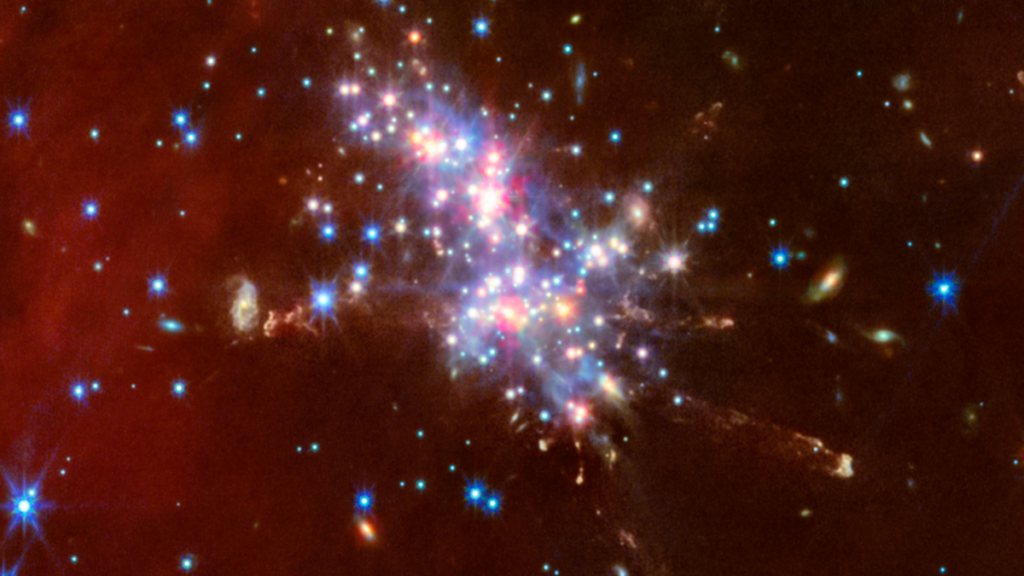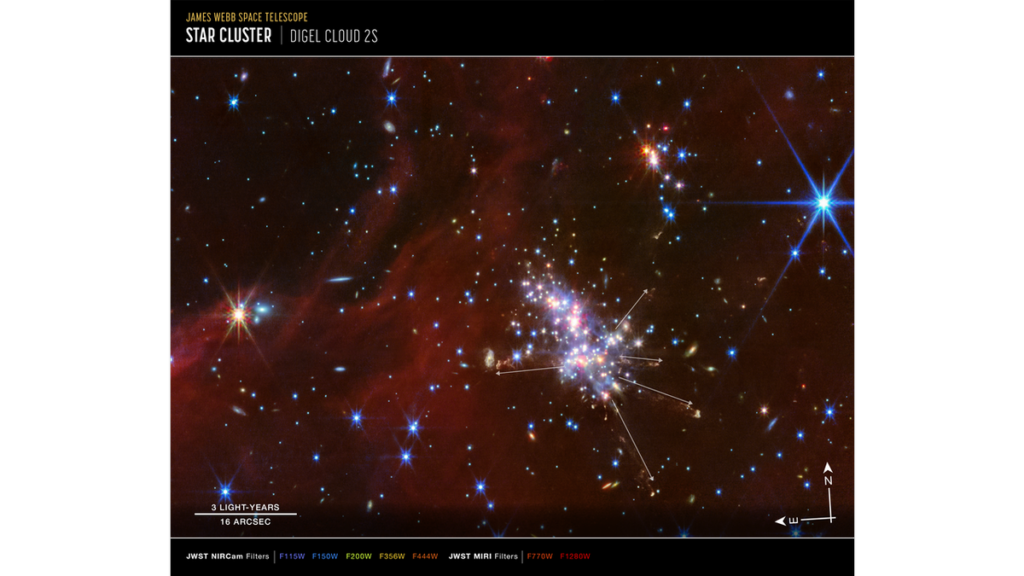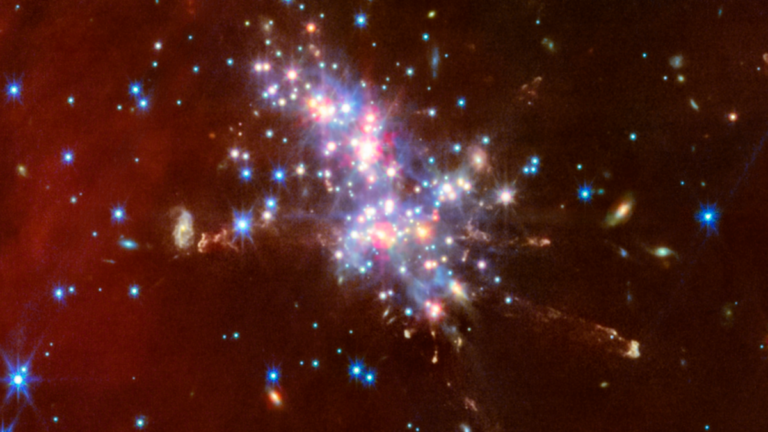James Webb Telescope Takes ‘Extreme’ Measures, Captures Baby Stars at the Edge of the Milky Way (Image)
“In the past, we knew about these star-forming regions but were not able to delve into their properties.”
Since the Christmas Day 2021 launch, the James Webb Space Telescope (JWST) has been breaking barriers, taking images of galaxies in the early universe when it was less than a billion years old. 8 billion-year age.
Now, the powerful telescope has turned its attention to a more familiar locale: the extremity of the Milky Way, that is the edge of our own galaxy. Astronomers have pointed the JWST to the outer part of the Milky Way galaxy mainly to the Extreme Outer Galaxy.
This area is 58,000 light years, or about 222,000 astronomical units, from Galaxy’s center, or the Galactic Center. Thus, these new observations really go to the edge of our Galaxy and possibly beyond. The end product is an astonishing picture of clouds of stars in a ‘starburst’ category that describes a stage where stars are formed in large numbers and at a very fast pace.
“We knew such star-forming regions existed, but we could not study the details of these regions more elaborately,” Natsuko Izumi who led the study from Gifu University and the National Astronomical Observatory of Japan explained. After working with other telescopes the JWST data improves our knowledge by making more powerful and impressive images of these regions.
Employing the NIRCam and MIRI detectors of JWST, the team was able to obtain high-resolution images of star-forming zones located in the vast molecular clouds, namely, Digel Cloud 1 and Digel Cloud 2 that are hundreds of light-years wide and are now pictured with unparalleled resolution.

From these clusters that are apparent with the naked eye, are protostars which are extremely youthful. These are stars which have not gathered enough matter from their nebulas to ignite nuclear fires at their core typical of a normal ‘main sequence star’.
As any first born child who will every now and then throw a tantrum, these protostars have their own form of disturbances. However, instead of baby food, they spit jets and outflows of superheated gas known as ‘plasma. ‘ Such activity is also depicted in the new JWST images.
“When I discovered Digel Cloud 2, I had not expected such a high level of the active star formation as well as the gorgeous jets detected,” Izumi said.
Digel Clouds consists of a different composition than other areas of the Milky Way galaxy. They do not contain elements more massive than hydrogen and helium; elements called “metals” by astronomers. Because the metal-poor compose the Digel Clouds, it offers an exceptional platform for analyzing the dwarf galaxies and especially the early Milky Way before much of the dying stars contributed to the metal enrichment. The team concentrated on four young star clusters in Digel Clouds 1 and 2, named 1A, 1B, 2N and 2S.
Then the astronomers looked into the 2S cluster where many young stars are active and spit out long plumes of material at the poles. They also defined a “sub-cluster” of stars enclosed in 2S.

‘We have seen in other forming regions of stars in our Galaxy that young stars spit out jets of material from their poles,’ Ressler of NASA’s Jet Propulsion Laboratory, part of the study team and the leader of the observation plan. ‘The best part that I found while working with the JWST data was that again and again, instead of a single jet shooting out in various directions from this star, it was multiple jets shooting in all directions that looked more like a fire work explosion. ’
This is only the first step in the team’s work on the Digel Clouds in the Extreme Outer Galaxy as seen with the JWST. Others want to explore further our Milky Way looking at other aspects like distributions of star masses in the aforementioned clusters of stars.
They may contain genomes of existence and star formation that explain how stars formed in one environment as compared to another environment.
‘This is why I would like to continue observing star formation in these areas,’ Izumi said. ‘Using data received with different observatories and telescopes, all the phases of the evolution can be studied. ’ “We also intend to investigate circumstellar disks reaching the Extreme Outer Galaxy to explain why its lifetime is shorter than those in the nearby star formation regions Moreover, I want to study the movements of the jets noted in Cloud 2S. ”
The team’s research is published in the Astronomical Journal.
Do not forget to share your opinion with us to provide you with the best posts !




0 Comments